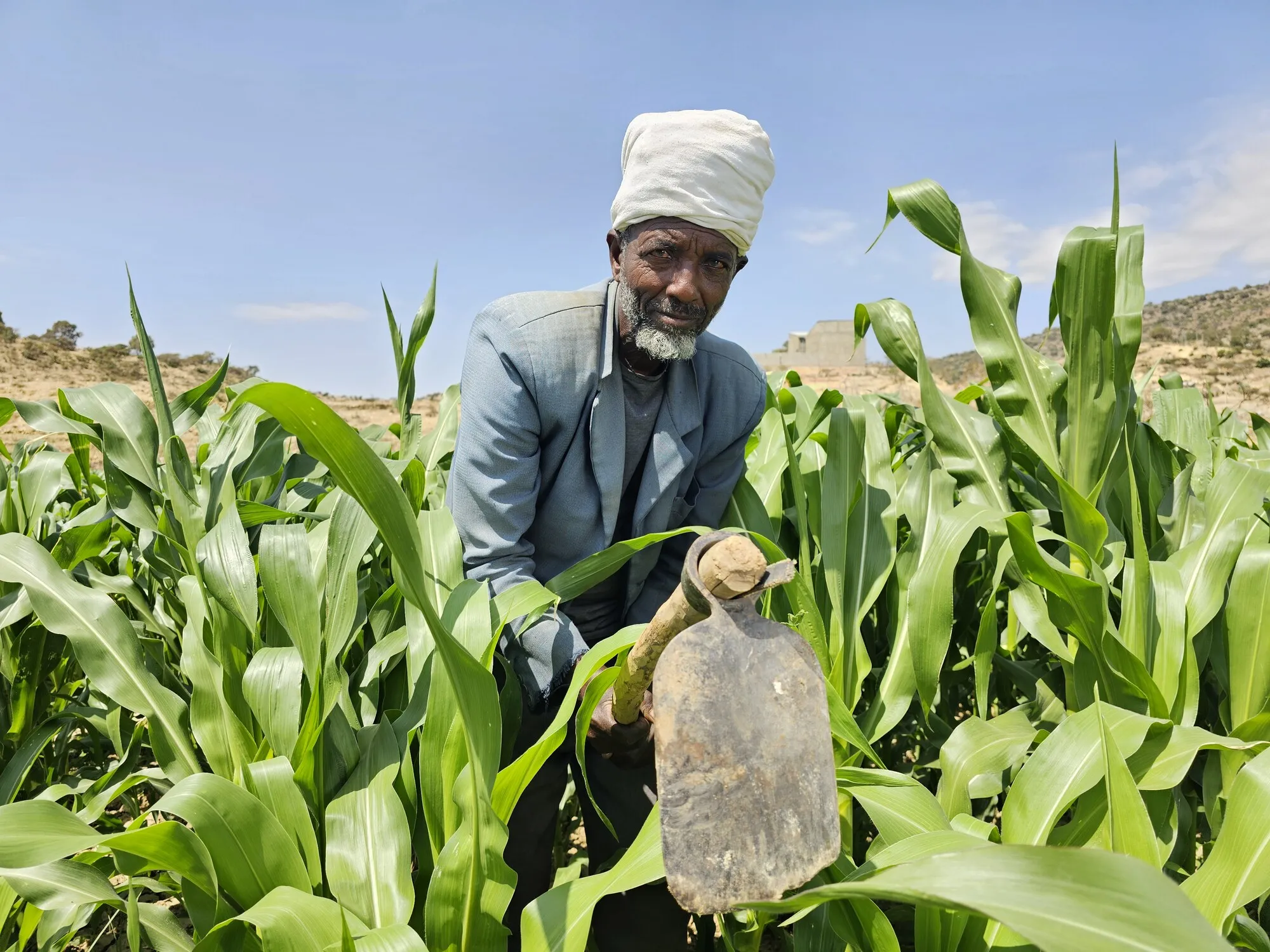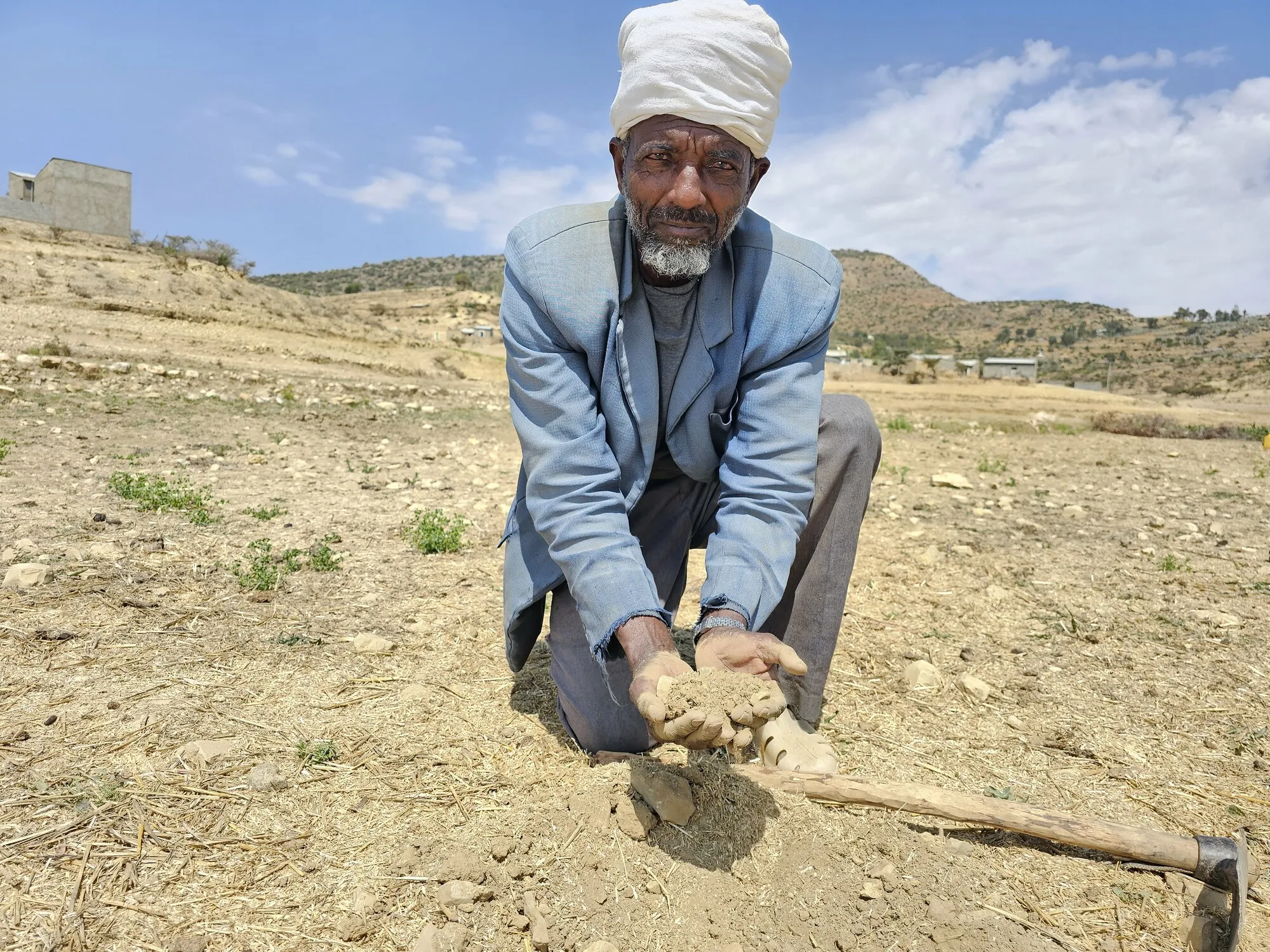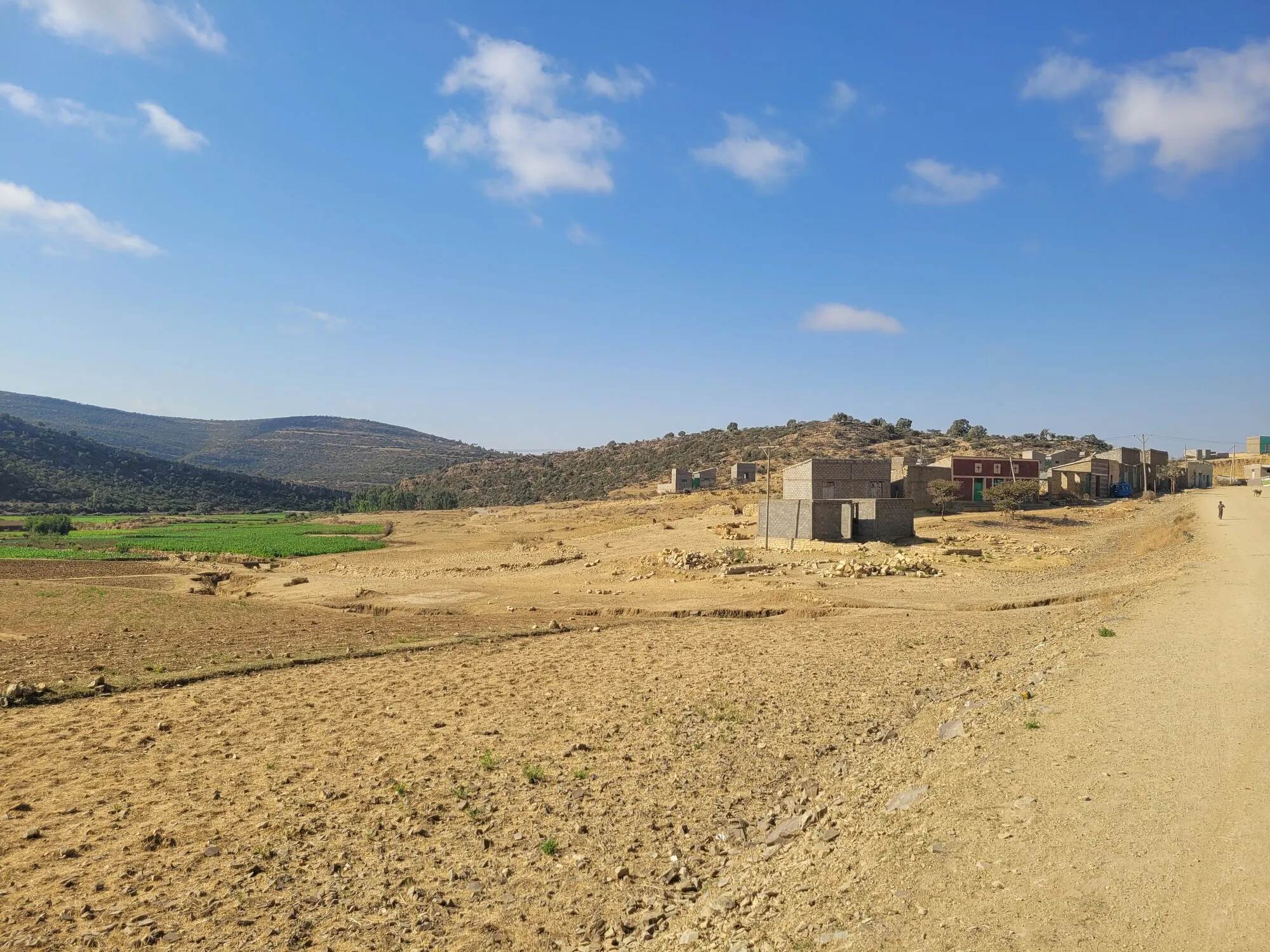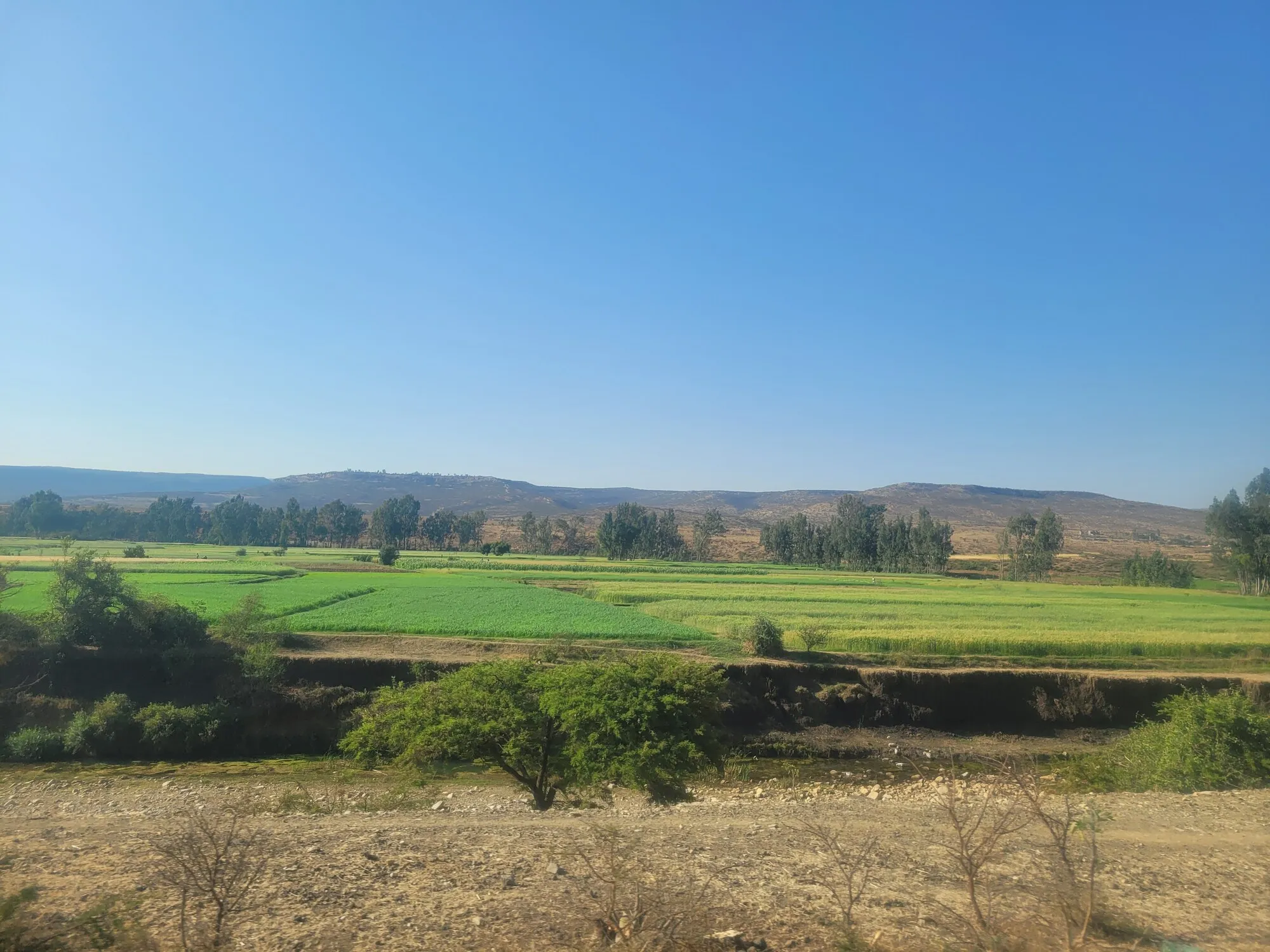Kalayu is from Tigray, Ethiopia, where 95 percent of potentially irrigable land in Ethiopia depends on rainfall. It is also where a two-year-long conflict ended only in November 2022, affecting an estimated seven million people. The conflict led to numerous casualties, mass displacements, food insecurity, and damage to infrastructure.
“First came the conflict, then the drought,” he says. “The conflict took all my resources. All my goats and sheep were lost. They were the source of our happiness and immediate income. We relied on their milk for nutrition.”
The shortage of rainfall has severely affected overall agricultural production, and surface and groundwater resources across the country. In Tigray, out of 1.3 million hectares of cultivable land, only half was planted due to drought where only 37 percent was harvested during the main season.
Nearly 1.4 million people in Tigray need immediate emergency food because of the drought.
“We usually sow between May and June, then the rain starts in June and stays until September. We harvest in October and November. But not last year,” Kalayu says.
June to September is the primary rainy season which accounts for 50 to 80 percent of the annual rainfall. The severe rainfall shortage in Tigray has put the region’s predominantly agricultural population in a precarious situation. Approximately 80 percent of Tigray’s residents are farmers who rely on consistent rainfall and favorable growing conditions to produce the food they need to sustain themselves and their communities.






